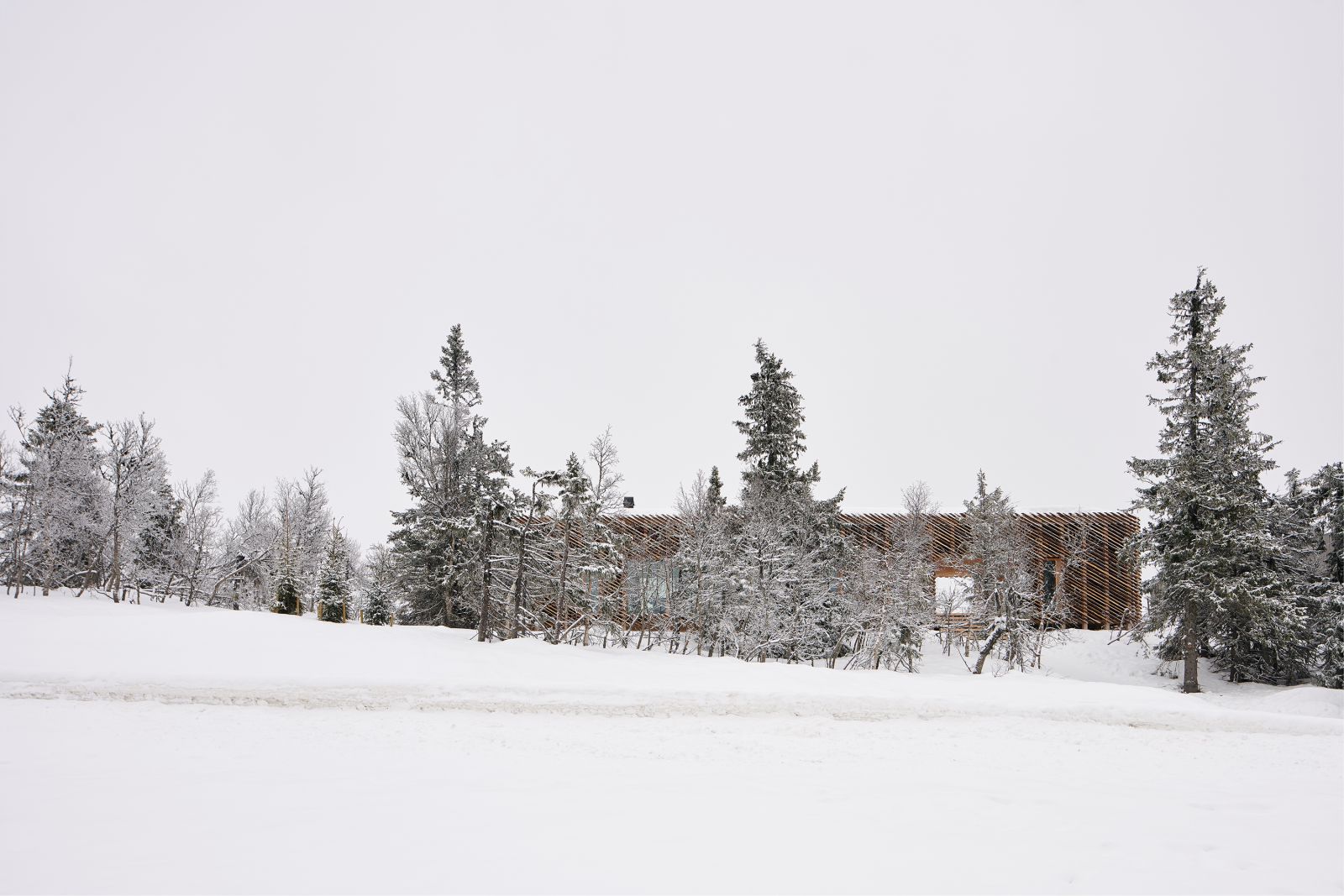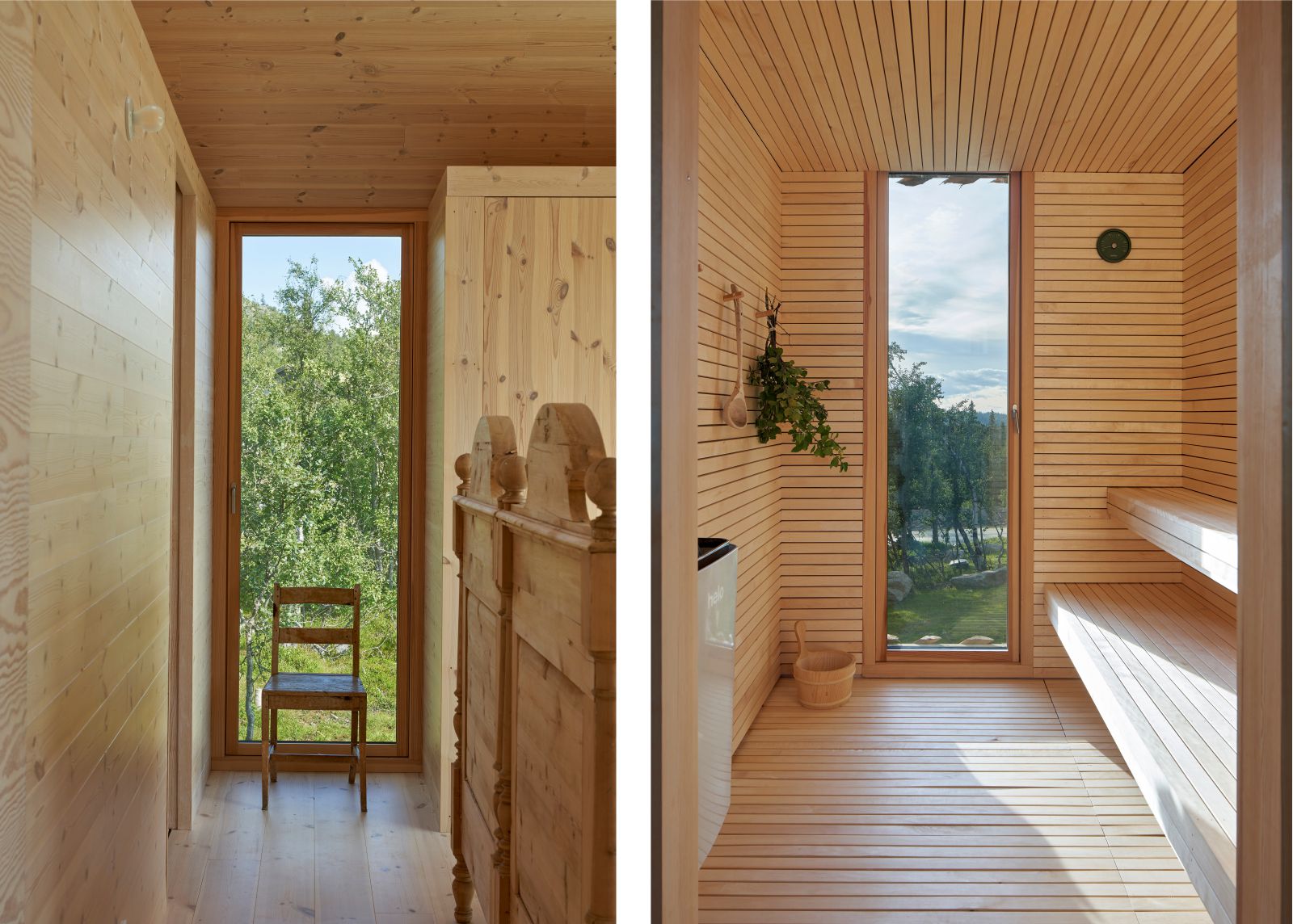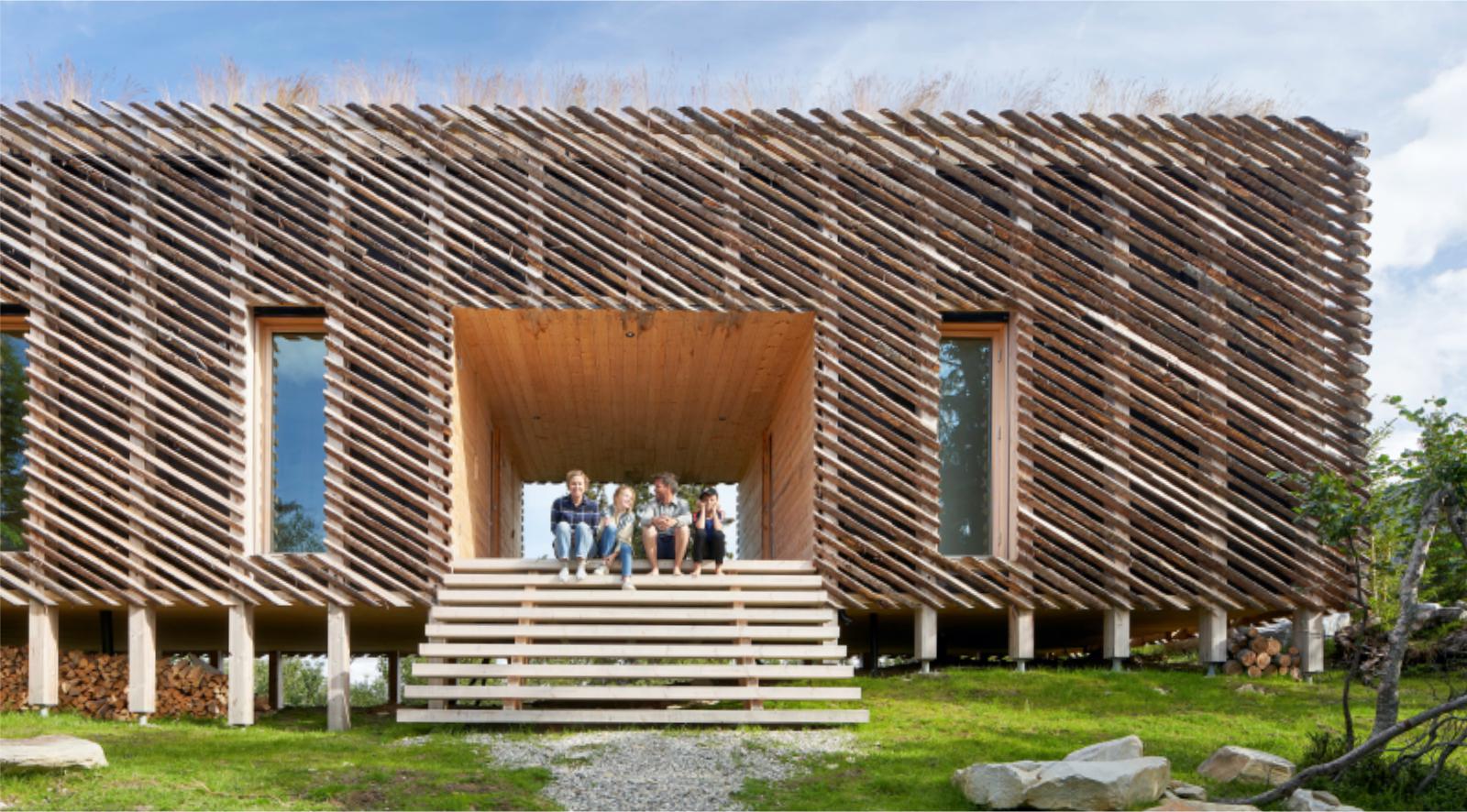Skigard Hytte is the first ground-up project that Casper and Lexie Mork-Ulnes have built for their own family. After securing a 2,000-square meter site in Kvitfjell ski resort, with sweeping views of the valley, Casper and Lexie began to give shape to the retreat they had always wanted for themselves: the main dwelling with a guest annex, and giving every room a view out.
The architects decided to give the house an unusual but straightforward configuration; by lifting it on thin CLT legs creating a raised viewing platform above the nature. The location of the cabin gives the family the opportunity to leave directly on skis to reach for the slopes or the shops and restaurants. An architect’s house can afford to be a laboratory for ideas, a crucible of invention. Casper and Lexie allowed themselves to push the boundaries and experiment with design and material strategies that clients might not have the appetite to test.
In the midst of the ski slopes
Located on the west side of Kvitfjell, 45 minutes north of Lillehammer, the cabin designed by Mork-Ulnes Architects is situated 943 meters above sea level, nearly at the top of the mountain (1.039 meters). Its high altitude means the cabin is exposed to severe winter weather, at times being socked in and at times floating peacefully above the clouds in the valley below. From November until April, one can put on downhill skis and reach the local market to go grocery shopping, returning home using the lifts.
Reinventing the vernacular
The project is a site specific response to the context and the cultural landscape. The exterior cladding of the cabin is made of skigard, a 3 meter long quarter cut log that is traditionally laid out diagonally by Norwegian farmers as fencing. While referencing rural architecture, the rough facade makes the cabin fit in within the rugged landscape and forested vegetation. In the winter when the gaps in the skigard siding fill with snow, the house is given a new and softer expression.
The grass top of the cabin also recalls the traditional sod roofs, common on rural log houses in Scandinavia until the late 19th century. Listed by the local planning regulations as one of the few materials allowed for roofs (in addition to slate or wood), the fuzzy top, moving with the wind, helps soften the otherwise rigid rectilinear geometry of the cabin. The cabin has a regular plan – an enfilade sequence of rooms in a row, following a central corridor – called Trønderlån in the Trøndelag region of Norway.
Life within, life underneath
Mork-Ulnes Architects wanted a house that connected to the ground lightly and allowed natural terrain to remain underneath. The architects have designed several other buildings on piers or raised foundations, like Moose Road (constructed on steel stilts to avoid severing tree roots) and Trollhus (lifted on concrete legs to protect it from snow), where they learned that it was an effective way of dealing with high snowdrifts and not needing to shovel the house out when the snow accumulates around doors and windows.
A notable feature of the house is that every surface is clad in wood. The unconventional roughness of the exterior log Skigard siding is matched by an almost wholly homogenous interior space where light and smooth solid pine paneling creates an intimate and cosy feel, offering few distractions to take the eyes away from nature outside. All of the cabinetry and custom furniture is made of three-layer cross-laminated pine sheets. The all-wood materiality also creates a unique wooden olfactory quality to the house.
The program
The program was to have a three-bedroom cabin plus sauna and an annex that gave guests private space to retreat. Two facing 6 meter-long floor-to-ceiling walls of glass provide the open-plan living, kitchen and dining area with a grand vista, creating the experience of being outside, exposed to the ever-changing scenery. The large southoriented glass wall allows low winter sun to illuminate the house during the day. In addition to the glass walls, a skylight at the apex of the frustum ceiling channels natural light into the living areas.
The first approach to the house is walking up the stairs to the veranda, where there are two doors on either side of the portal which open to the main house or guest annex. Upon entry to the main house, one finds a hallway with direct access to a mud room where one can remove outer layers of clothing and shoes and enter the house. Under the first frustum skylight, the entry hallway also accesses the childrens’ two compact bedrooms and bath. After walking through the compression of the hallway space, one walks back into nature finding a room composed of two long walls of glass – with views of the valley and ski slopes on one side and woods and meadow on the other.
The great room houses the main communal space containing kitchen, lounge and dining area. At the end of the great room one finds the master suite – with bathroom and sauna. On the other side of the veranda, the guest annex contains a bedroom, bathroom, spacious lounge area, and sleeping loft. This cabin in Norway, with its extraordinary rationality and its ability to redefine the relationship with the snowy fields and with nature, represents yet another opus in Mork-Ulnes Architects’ coherent portfolio of works. The Skigard Hytte project witnesses this quality where a careful attention to the interiors becomes one with the general architectural composition.
- Location: Kvitfjell Resort, Fåvang, Norway
- Architect: Mork-Ulnes Architects
- Project Team: Lexie Mork-Ulnes, Casper Mork-Ulnes, Phi Van Phan, Auste Cijunelyte, Kristina Line, Monica Lepinska
- Structural engineer: Bygg Konsulentene Øst.
- Cabinetry and furniture: Strønes Snekkerverksted
- General contractor: Hafjell Bygg
- Client: Lexie and Casper Mork-Ulnes
- Area: 2.148 square meters
- Size: 145 square meters
- Complete: Fall 2019
- Photographs: Bruce Damonte, Courtesy of Image MEDIA AGENCY

Photo © Bruce Damonte 
Photo © Bruce Damonte 
Photo © Bruce Damonte 
Photo © Bruce Damonte 
Photo © Bruce Damonte 
Photo © Bruce Damonte 
Photo © Bruce Damonte 
Photo © Bruce Damonte 
Photo © Bruce Damonte 
Photo © Bruce Damonte 
Photo © Bruce Damonte 
Photo © Bruce Damonte 
Photo © Bruce Damonte 
Photo © Bruce Damonte 
Photo © Bruce Damonte 
Photo © Bruce Damonte 
Photo © Bruce Damonte 
Assembly diagram

